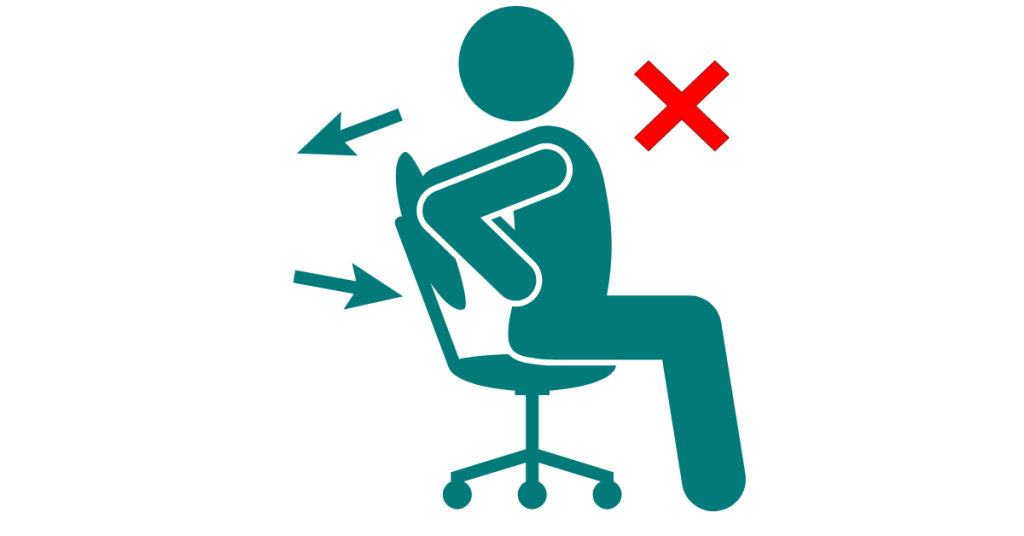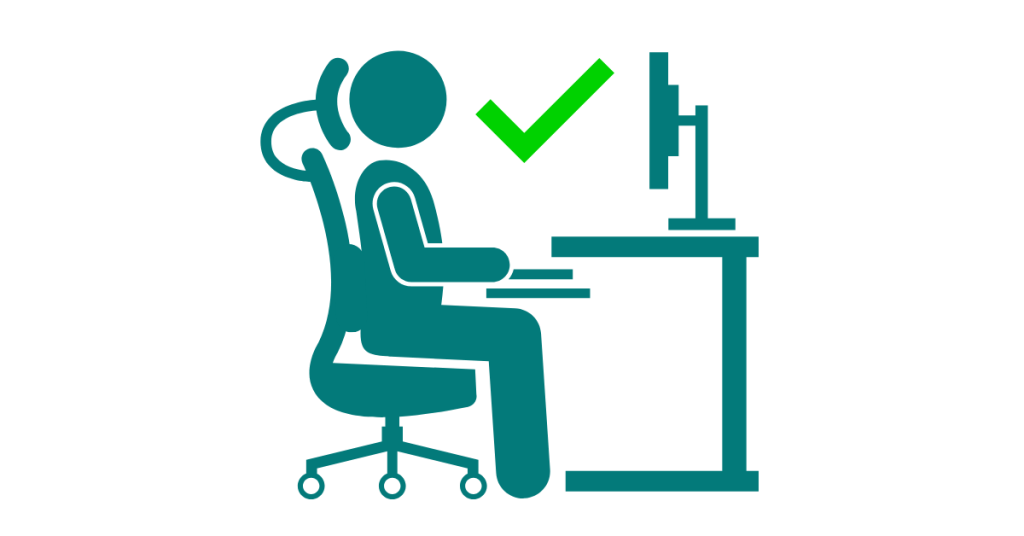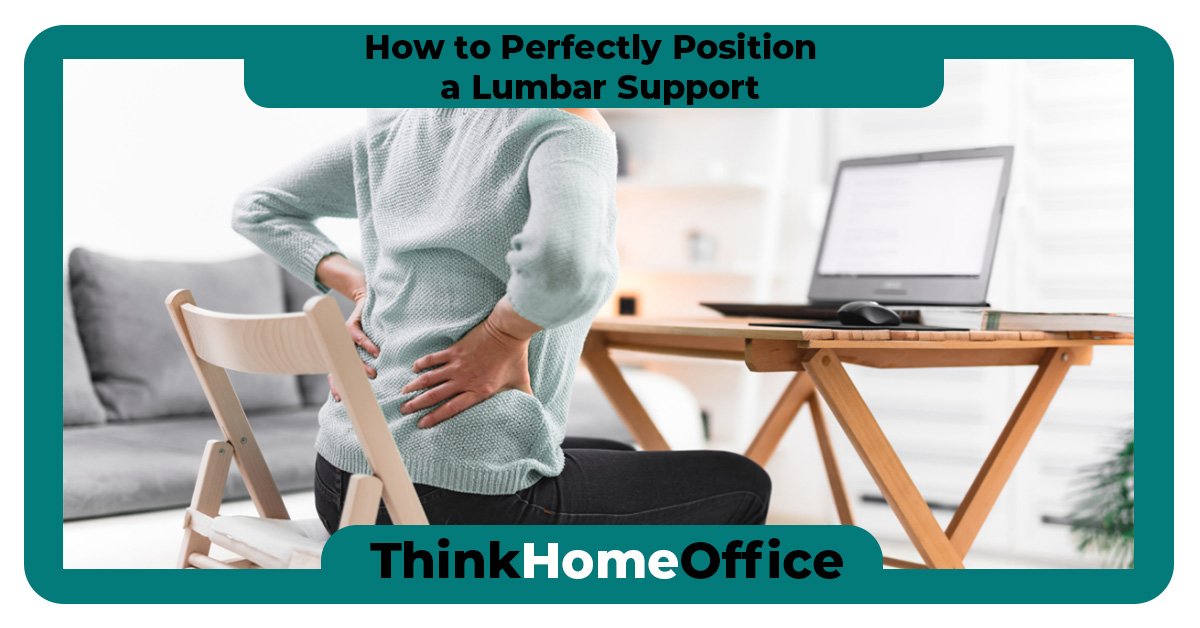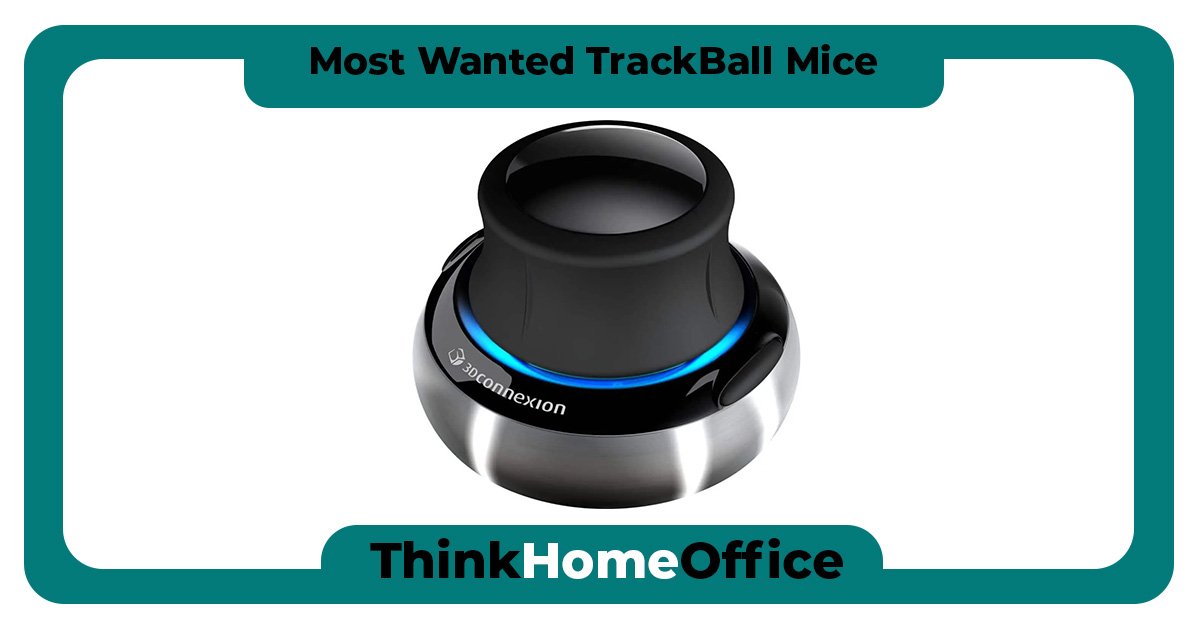If your gaming or office chair does not have lumbar support, it’s time for a change as a Lumbar support is essential for your comfort and overall spinal wellbeing. This article aims to emphasize how important having one is, and to provide advice on how to effectively position it for maximum comfort.
What Exactly is the Lumbar Region of the Back?
The Lumbar area refers to the lower back, which curves inward. It consists of 5 vertebrae – the Lumbar Vertebrae, which are collectively known as the Lumbar Region. They form the lower curve of the spine. In a natural spine position (a neutral standing position) the vertebrae should create an ‘S’ shape, with the 5 lumbar vertebrae forming the bottom of the ‘S’.


Causes of Lumbar Problems
Lumbar back problems, unless hereditary, are mostly self-inflicted as a result of bad posture, from sitting improperly, and for too long. Issue can also arise from bad working practises, such as picking up heavy loads in a manner that puts too much stress on the Lumbar vertebrae.



Consequences of Inadequate Lumbar Support
The lack of proper lumbar support go beyond feeling discomfort, getting just a sore back. Insufficient lumbar support can lead to more severe and potentially permanent consequences. The main issues of poor Lumbar support are discussed below:
Lower Back Pain
As mentioned above, the direct symptom of an improperly supported lower back will be aches and pain to the Lumbar region. It will initially manifest as a dull ache, and then become more acute and painful if left unaided.
Curvature of the Spine
If your spine is not in the proper ‘S’ shape, your vertebrae will compress awkwardly, resulting in permanent spinal curvature. This curvature negatively affects your posture and spine health, often causing back discomfort and chronic pain. Preventing spine curvature is essential for supporting your back health.
Constriction of the Digestive Function
Sitting with poor posture and neglecting lumbar support can compress your organs and hinder proper digestive function. Maintaining a neutral spine position allows your digestive tract to perform optimally. Poor posture and lack of lumbar support can lead to stomach cramps, abdominal discomfort, or constipation.
Headaches
Improper spine alignment can cause strain in your lumbar region, which can then travel through your entire spine and result in neck pain. Consistent strain can lead to headaches and migraines, causing significant discomfort.
Insomnia
Insomnia and poor sleep can be a direct result of lumbar pain or a symptom of other issues caused by inadequate lumbar support. Back pain or headaches can make it difficult to sleep comfortably. Quality sleep is crucial for maintaining overall well-being and immunity, so lack of sleep in addition to back distress can worsen your condition.
The Importance of a Lumbar Support
Lumbar support plays a crucial role in maintaining spinal health and promoting good posture. As disclosed above, without proper lumbar support, you may experience health problems that can be long-lasting.
It’s not just the health benefits to consider, but you will also be less productive. Having an aching lower back will place added strain on the rest of your spine, neck and shoulders. In fact, you’ll begin to fatigue throughout the whole of you upper torso.
Having adequate support will allow you to work longer through being more comfortable!
What should I do to Add Lumbar Support?
By now you should be aware of whether your chair has a Lumbar support.
If it does… Great!
Ensure you have adjusted it correctly – continue further down on a technique to assist you.
If you don’t have a chair with a Lumbar support then you have a few options:
- Grab a cushion, and reading the steps given below, proceed to embed an ad-hoc Lumbar support.
- Look to purchase an after market Lumbar Support made specifically to be added to your existing office chair.
- Look at purchasing a quality ergonomic office chair.
Any of these will suffice but, as with all things, some are better options than others. Let’s look at some of the ‘Pros & Cons’ of each option:
Option 1. Will be very quick, cheap to do – costs nothing if you have a pillow! The downside is, you have a pillow on your chair, which might look a bit… naff! It will lose its shape, and need constant adjustment to provide ongoing benefit. Oh, it will look a bit naff, really naff in fact.
Option 2. These are an inexpensive way to give you the support you need, most are designed to strap to your chair, offering adjustment to cope with probably any chair on the market, they are also more aesthetic, so it fits in with the look of an office chair, so certainly not naff!
Option 3. Clearly the most ideal option. But, also the most expensive. Not only will an ergonomic office chair offer you Lumbar support, but – if you opt for a quality offering – it will give you the full ergonomic package, meaning you can have an office chair which can be adjusted perfectly, uniquely to you!
Where to a Position Lumbar Support
To position your lumbar support correctly, whether it’s a pillow or a chair feature, you need to identify the natural curve of your spine.

The steps given below will advise on a simple technique to allow you to position an additional Lumbar support to a non-ergonomic chair. They also elaborate on what to do if you have an ergonomic chair, or a chair with Lumbar support.
Follow These Steps…
1. Sit in your chair and raise your arms above your head in a stretch.
2. Slowly bring your arms down towards your keyboard, resting them where you would comfortably type.
3. An office chair without a Lumbar Support/ Lumbar Adjustment
When sitting with good posture, there should be an indent in your back between your sacrum and thoracic region, which forms your chest. This natural curve is where your Lumbar Support should be placed, or where you should adjust your chair back to focus on.
4. An office chair with Lumbar Support/ Adjustment
If you have an ergonomic office chair then you should have an adjuster on the rear of the chair. This could be a dial type adjuster – where you rotate the dial to pull the lumbar support closer, or further away to the lower back.
It may also be a ‘linear band’ type design, where the band stretches across the lower back. At each end you have tabs, which can be adjusted to loosen or tighten the band.
More higher-end ergonomic chairs may have ‘dynamic’ adjustment, where the spring structure of the chairs back molds to the lumbar region, supporting it.
It all depends on the specific model of chair you have – the manufacturers instructions should be read to ensure correct adjustment is made.
On correct adjustment of your chair, you should feel a comfortable pressure on your lower back, stretching it where the chair is supporting you.
Additional Lumbar Support

When you adjust the Lumbar Support or place your pillow correctly, the area just above your hips should be slightly pushed forward, providing a natural stretch that relieves your back. If it doesn’t feel comfortable, you may need to readjust your lumbar support.
Ergonomic Chair Lumbar Support

When you adjust the lumbar support or place your pillow correctly, the area just above your hips should be slightly pushed forward, providing a natural stretch that relieves your back. If it doesn’t feel comfortable, you may need to readjust your lumbar support.
To Wrap Up…
Lumbar support to your spine is incredibly important, regardless of whether you experience back pain or not. Neglecting the lumbar region can result in discomfort, pain, or even permanent health problems, as well as shortening your time working at a comfortable level.
No one wants to be uncomfortable while working or gaming, as it hampers productivity and success. Adding a soft lumbar pillow, Lumbar Support can greatly enhance your comfort. Getting an Ergonomic chair will provide you with all-round benefit.
Before you suffer the discomfort and issues associated with poor posture and misaligned spine, prioritize your lumbar support. You might just thank us later!
FAQs
Q. Do I need upper back support?
Achieving correct posture does not require as much support for the upper back. The most critical areas to support are the lumbar region and neck, which can be done with a prominent lumbar support and headrest. That is not suggest you should forget about your upper back!
Q. How do I correctly position a lumbar support in my chair for optimal comfort and support?
To position a lumbar support correctly:
Place the support pillow or cushion at the small of your back, just above your hips.
Ensure it aligns with the natural curve of your spine.
Adjust the height of the support, so it fits snugly against your lower back.
Sit back against the lumbar support to maintain contact with it throughout your sitting session.
Q. Should I position the lumbar support cushion higher or lower on my back for the best support?
The ideal position for a lumbar support cushion is typically at the level of your lower back’s natural curve, which is usually just above your hips. However, personal preference and body shape may vary. Experiment with different heights to find the position that offers the most comfort and support for your specific needs.
Q. Can I use a lumbar support cushion on different chairs, or should I get one for each chair I use?
Lumbar support cushions are portable and can be used on different chairs, making them versatile. If you frequently switch between chairs, consider investing in a separate lumbar support cushion for each chair for the best results. This ensures consistent support tailored to each chair’s design.
Q. Is it possible to overuse a lumbar support cushion?
While using a lumbar support cushion is beneficial for maintaining proper posture and back support, it is possible to overuse it. Prolonged use without occasional breaks and movement can lead to muscle stiffness. It’s advisable to strike a balance between using the cushion and taking short breaks to stand, stretch, and walk around to prevent stiffness and maintain overall back health.
Q. What is the lumbar region, and why is it important to support it properly?
The lumbar region refers to the lower part of your spine, specifically the area around your lower back. It is crucial to support this region properly because it helps maintain the natural curve of your spine, reducing the risk of back pain and discomfort. Proper lumbar support also promotes good posture and spinal alignment, which can have long-term health benefits.
Q. How do I choose between a lumbar support, cushion, or an ergonomic chair for better lumbar support?
The choice between a lumbar support, cushion, or ergonomic chair depends on your specific needs and circumstances. A lumbar support pillow or cushion is a portable option that can be used with various chairs. An ergonomic chair is a complete solution designed to provide continuous support. Consider factors like your budget, workspace, and whether you need support on the go when making your decision.
Q. How do I properly use a lumbar support cushion?
To use a lumbar support cushion effectively:
Position the cushion at the small of your back, just above your hips.
Adjust the cushion’s height and firmness to match your comfort preferences.
Make sure your lower back maintains contact with the cushion while sitting.
Sit back against the cushion and maintain good posture.
Q. What features should I look for in an ergonomic chair to ensure proper lumbar support?
When shopping for an ergonomic chair, consider the following features for adequate lumbar support:
Adjustable lumbar support: Look for chairs with adjustable lumbar support to tailor it to your spine’s natural curve.
Seat depth and height adjustment: These features allow you to customize the chair’s fit.
Quality cushioning: Opt for a chair with high-density foam or memory foam to provide comfort and support.
Adjustable armrests and backrest recline: These features enhance overall comfort and support for your entire body.
Q. Can using a lumbar support or cushion prevent back pain completely?
While using a lumbar support or cushion can significantly reduce the risk of back pain and discomfort, it may not entirely prevent it. It’s important to combine proper lumbar support with good posture, regular breaks, and back-strengthening exercises for a comprehensive approach to back health.
Q. How often should I replace a lumbar support cushion or an ergonomic chair to maintain proper support?
The lifespan of a lumbar support cushion or ergonomic chair can vary based on quality and usage. Generally, a good-quality ergonomic chair can last 7-10 years or longer with proper maintenance. Lumbar support cushions may need replacement every 1-2 years, depending on wear and tear. Regularly inspect your equipment and replace them when you notice a decrease in support or comfort. It will no doubt come down to the quality of the support versus the amount it is used.






